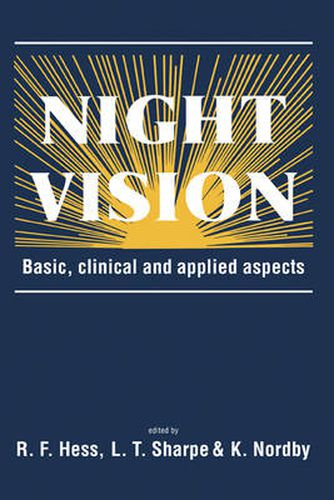Readings Newsletter
Become a Readings Member to make your shopping experience even easier.
Sign in or sign up for free!
You’re not far away from qualifying for FREE standard shipping within Australia
You’ve qualified for FREE standard shipping within Australia
The cart is loading…






Much has been discovered in recent years about the way our visual system copes with very low light levels. This detailed and up-to-date book describes the light and dark adaptation of receptoral and post-receptoral mechanisms from a number of perspectives. The authors emphasise the importance of the study of achromatopsia, a rare congenital condition in which the visual mechanisms that mediate day vision are absent whilst those that mediate night vision remain intact. There is also a comprehensive review of those ocular conditions which involve a loss of night vision. The final section of the book discusses the various types of nightviewing instruments presently available, against the backdrop of what limits night vision in normal observers. Contributions from many of the world’s leading experts in vision research makes this unique volume essential reading for all those with an interest in night vision, including ophthalmologists, optometrists, neurologists, physiologists and psychologists.
$9.00 standard shipping within Australia
FREE standard shipping within Australia for orders over $100.00
Express & International shipping calculated at checkout
Much has been discovered in recent years about the way our visual system copes with very low light levels. This detailed and up-to-date book describes the light and dark adaptation of receptoral and post-receptoral mechanisms from a number of perspectives. The authors emphasise the importance of the study of achromatopsia, a rare congenital condition in which the visual mechanisms that mediate day vision are absent whilst those that mediate night vision remain intact. There is also a comprehensive review of those ocular conditions which involve a loss of night vision. The final section of the book discusses the various types of nightviewing instruments presently available, against the backdrop of what limits night vision in normal observers. Contributions from many of the world’s leading experts in vision research makes this unique volume essential reading for all those with an interest in night vision, including ophthalmologists, optometrists, neurologists, physiologists and psychologists.